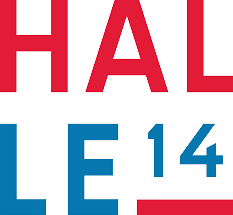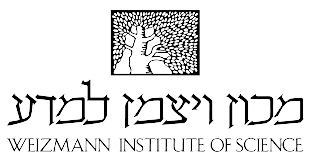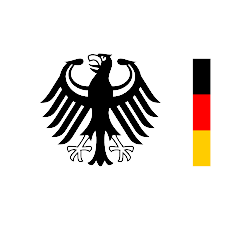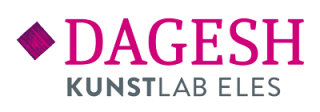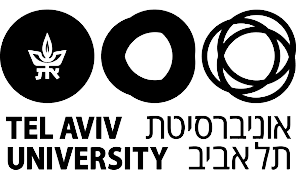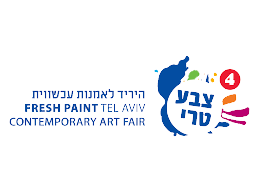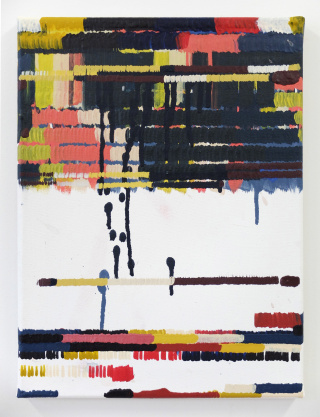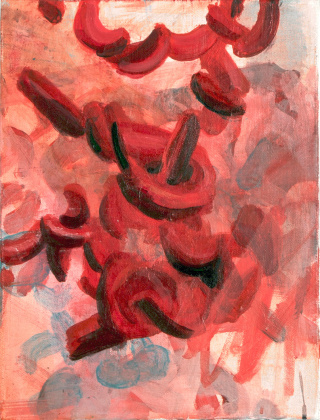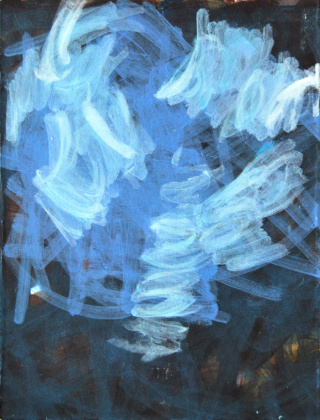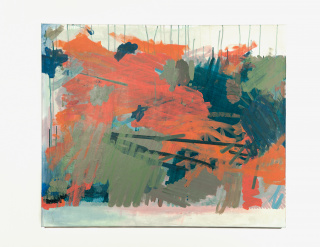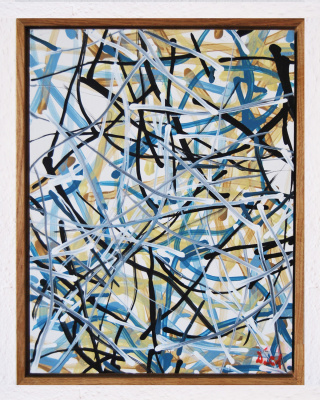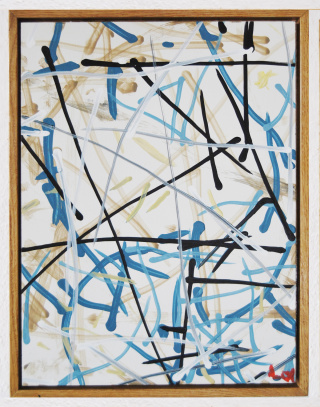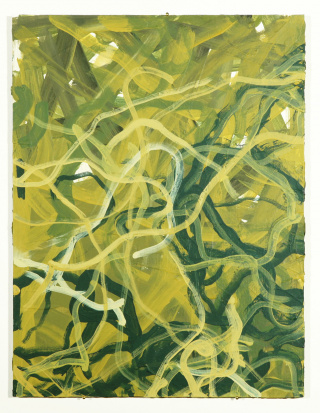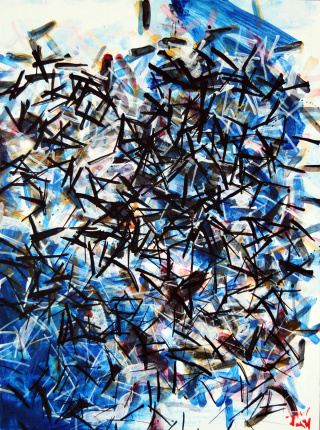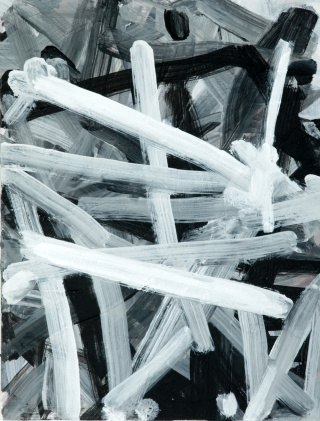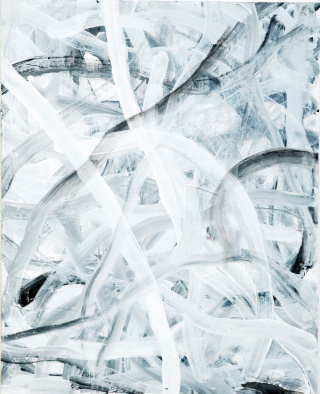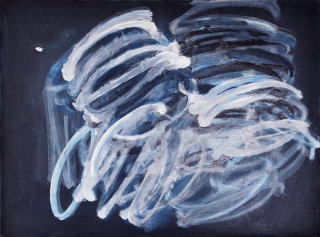Crossdisciplinary Research in Painting and Robotics; Halle 14, Spinnerei Leipzig; Museum for Natural History, Tel Aviv 2017
Six Variations on Gestural Computer-Generated Brushstrokes. Series reflecting the quality of spontaneous hand movement. Using the e-David, the same generated path was painted again and again, each time on a new canvas, with the knowledge that this kind of exact
repetition of movement could never be achieved by a human hand. Robotic painting.
Acrylic on canvas, each 60 x 80 cm. 2016. 39
Since 2016 I have been collaborating on an ongoing basis with the e-David painting robot team at the University of Konstanz. Working with the lab developers in parallel to the evolution of the painting machine, I have designed and integrated into the painting system an extensive (and growing) library of brushstrokes, gestures, trajectories and patterns. These can be programmed individually or collectively in various combinations, so that they can be used and executed by the painting robot, enabling a customized and interactive human-machine creative environment. Two closely related features naturally arise from the working methods inherent to this constellation. The integration of computer and robotic technologies in the painterly process makes it possible to capture, save, translate and manipulate simple gestures and more complex tasks as digital information. Quite naturally, this creates a certain distance between the painting and the painter, who is now simultaneously the viewer and the executor. Strokes can be generated that appear organic but are realized in a manner that only a machine is capable of: with exact repetition, for example. The robot becomes a powerful tool to explore an entire realm of creative practice that extends beyond the physical and perceptual limitations of solely human-level practices. As an artist and a consumer of art I wondered, however, if it would be possible to recognize brushstrokes done by a robot in a more complex, generated work. Such questions opened up the terrain for the creation of several groups of works done in series.
The practice of digital image-making represents a new manner by which images can be created whose sources are not derived from painting or photography, but rather arise through the writing of computer code, and are therefore not based on existing images of things. Such an approach makes it possible to deal with the cultural and psychological implications of our environment through symbols. This particular manner of creating images can, of course, encapsulate a huge amount of information, emanating from the most diverse sources — for example, fractal models from nature, physical phenomena and mathematical laws — that can then be translated into the visual domain.
Each of the individual works, is an outcome of an ever-changing, interactive constellation of human, computer, robotics, processes and materials. Obviously, an interdisciplinary working platform in which artist, computer scientist, artistic practice and pedagogical reflections converge inspires a large range of questions regarding the use of technologies in the creative process. How does one incorporate the use of computers, robots and machines in the very intuitive and gestural acts and practice of making a painting? How could we decompose the act of making a mark (human) into a corporal movement (machine) in such a manner that logic-based decisions (computer) and emotional intentions (artist) can coexist in a fruitful, symbiotic relationship?
Lorem ipsum dolor sit amet, consetetur sadipscing
Robotic paintings, 2016-18
e-David — In 2008, Oliver Deussen (Visual Computing) built an Electronic Drawing Apparatus for Vivid Image Display at the University of Konstanz. The e-David is a robotic painting system that self-supervises using a visual feedback loop that allows it to compare the current state of the canvas or paper with a digital reference. It is intended as a cross-disciplinary research platform in which arts, informatics and robotics converge. The project addresses questions such as the potential and intentions of creating a painting machine that can implement both human and computational models of decision-making in an interactive, real and simulated world. Depending on the context, the system supports various hardware implementations, ranging from industrial welding robots to much simpler XY plotters. e-David is capable of both autonomous painting and collaboration with human painters.
e-David Self-Portrait; robotic painting; acrylic on canvas, 60 x 80 cm, 2016.
